Attached files
| file | filename |
|---|---|
| 8-K - FORM 8-K - PNC FINANCIAL SERVICES GROUP, INC. | d416131d8k.htm |
| EX-99.1 - FINANCIAL SUPPLEMENT (UNAUDITED) FOR THIRD QUARTER 2012 - PNC FINANCIAL SERVICES GROUP, INC. | d416131dex991.htm |
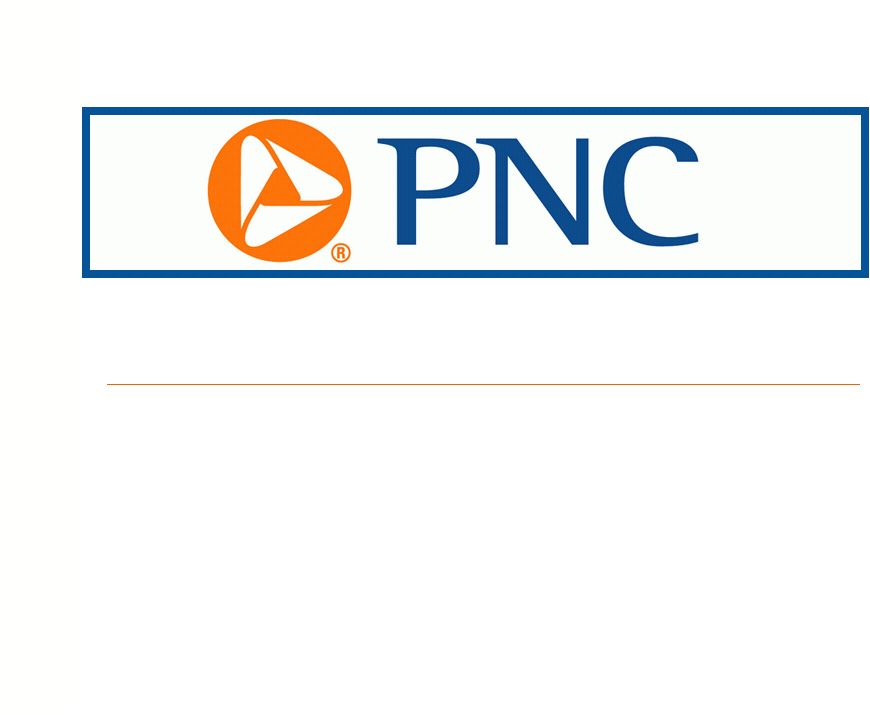 The PNC
Financial Services Group, Inc. Third Quarter 2012
Earnings Conference Call
October 16, 2012
Exhibit 99.2 |
 2
Cautionary Statement Regarding Forward-Looking
Information and Adjusted Information
This presentation includes “snapshot” information about PNC used by way of
illustration. It is not intended as a full business or financial review and should be
viewed in the context of all of the information made available by PNC in its SEC
filings. The presentation also contains forward-looking statements regarding
our outlook for earnings, revenues, expenses, capital levels and ratios, liquidity levels,
asset levels, asset quality, financial position, and other matters regarding or
affecting PNC and its future business and operations. Forward-looking statements are necessarily subject to numerous assumptions, risks and
uncertainties, which change over time.
The forward-looking statements in this presentation are qualified by the factors affecting
forward-looking statements identified in the more detailed Cautionary Statement
included in the Appendix, which is included in the version of the presentation materials posted on our corporate website at
www.pnc.com/investorevents and in our SEC filings. We provide greater detail regarding
these as well as other factors in our 2011 Form 10-K, as amended by Amendment No. 1
thereto, and 2012 Form 10-Qs, including in the Risk Factors and Risk Management sections and in the Legal Proceedings and Commitments
and Guarantees Notes of the Notes to Consolidated Financial Statements in those reports, and
in our subsequent SEC filings. Our forward-looking statements may also be
subject to other risks and uncertainties, including those we may discuss in this presentation or in SEC filings, accessible on the SEC’s website at
www.sec.gov and on PNC’s corporate website at www.pnc.com/secfilings. We have
included web addresses in this presentation as inactive textual references only.
Information on these websites is not part of this presentation.
Future events or circumstances may change our outlook and may also affect the nature of the
assumptions, risks and uncertainties to which our forward- looking statements are
subject. Forward-looking statements in this presentation speak only as of the date of this presentation. We do not assume any duty
and do not undertake to update those statements. Actual results or future events could
differ, possibly materially, from those anticipated in forward-looking statements,
as well as from historical performance.
In this presentation, we sometimes refer to adjusted results to help illustrate the impact of
certain types of items, such as provisions for residential mortgage repurchase
obligations, non-cash charges related to redemptions of trust preferred securities, gain on sale of Visa shares, expenses for residential mortgage
foreclosure-related matters, integration costs, and legal, mortgage
foreclosure-related and OREO costs. This information supplements our results as reported
in accordance with GAAP and should not be viewed in isolation from, or as a substitute for,
our GAAP results. We believe that this additional information and the
reconciliations we provide may be useful to investors, analysts, regulators and others as they evaluate the impact of these respective items on our results
for the periods presented due to the extent to which the items may not be indicative of our
ongoing operations. We may also provide information on the components of net
interest income (purchase accounting accretion and the core remainder) and the impact of purchase accounting accretion on net interest
margin, and information on return on average tangible common equity. We believe that
core net interest margin (net interest margin less (annualized purchase accounting
accretion divided by average interest-earning assets)), a non-GAAP measure, is useful as a tool to help evaluate the impact of purchase
accounting accretion on net interest margin. And we believe that return on average
tangible common equity (calculated as annualized net income attributable to common
shareholders divided by (average common shareholders’ equity less total intangible assets, other than servicing rights)), a non-GAAP measure, is
useful as a tool to help measure and assess a company’s use of common equity. Where
applicable, we provide GAAP reconciliations for such additional information, including
in the slides, the Appendix and/or other slides and materials on our corporate website at www.pnc.com/investorevents and in our SEC
filings.
In certain discussions, we may also provide information on yields and margins for all
interest-earning assets calculated using net interest income on a taxable-
equivalent basis by increasing the interest income earned on tax-exempt assets to make it
fully equivalent to interest income earned on taxable investments. We believe
this adjustment may be useful when comparing yields and margins for all earning assets. We may also use annualized, proforma, estimated or
third party numbers for illustrative or comparative purposes only. These may not reflect
actual results. This presentation may also include discussion of other non-GAAP financial measures, which,
to the extent not so qualified therein or in the Appendix, is qualified by GAAP
reconciliation information available on our corporate website at www.pnc.com under “About PNC–Investor Relations.”
|
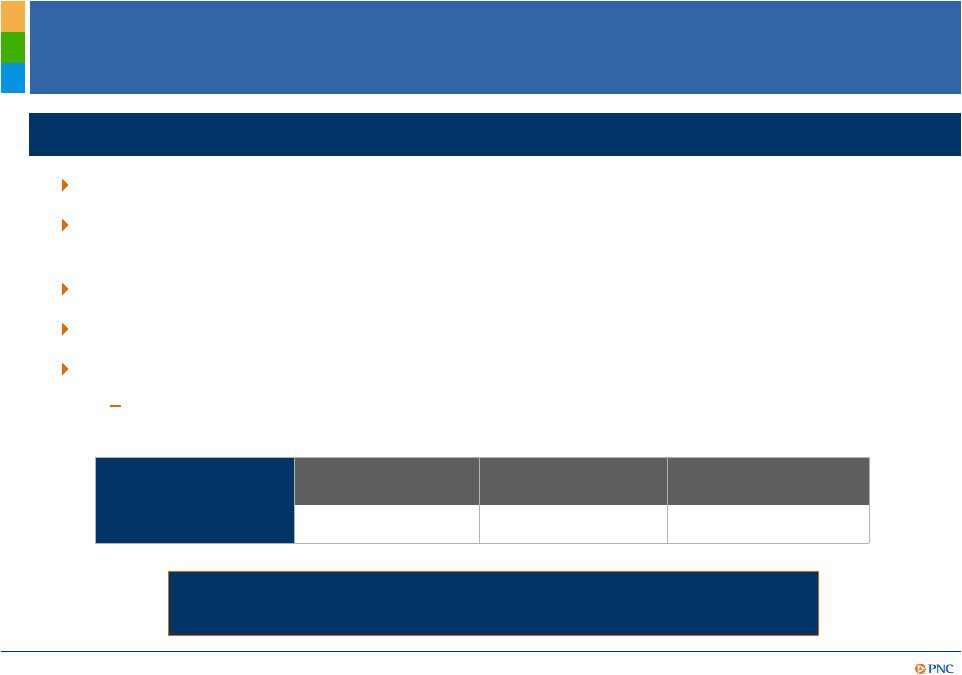 3
Significant 3Q12 Achievements
PNC Is Well-Positioned to Continue to Create Shareholder Value.
3Q12 financial
summary
Net income
Diluted EPS from
net income
Return on
average assets
$925 million
$1.64
1.23%
Net income of $925 million and EPS of $1.64
Strong overall performance driven primarily by customer, loan and fee income
growth
Overall credit quality improved
Well-managed expenses -
continuous improvement initiatives remained on track
Continued to strengthen capital levels and maintained strong liquidity positions
3Q12 highlights
Issued $480 million of preferred stock in late September and early October
2012 |
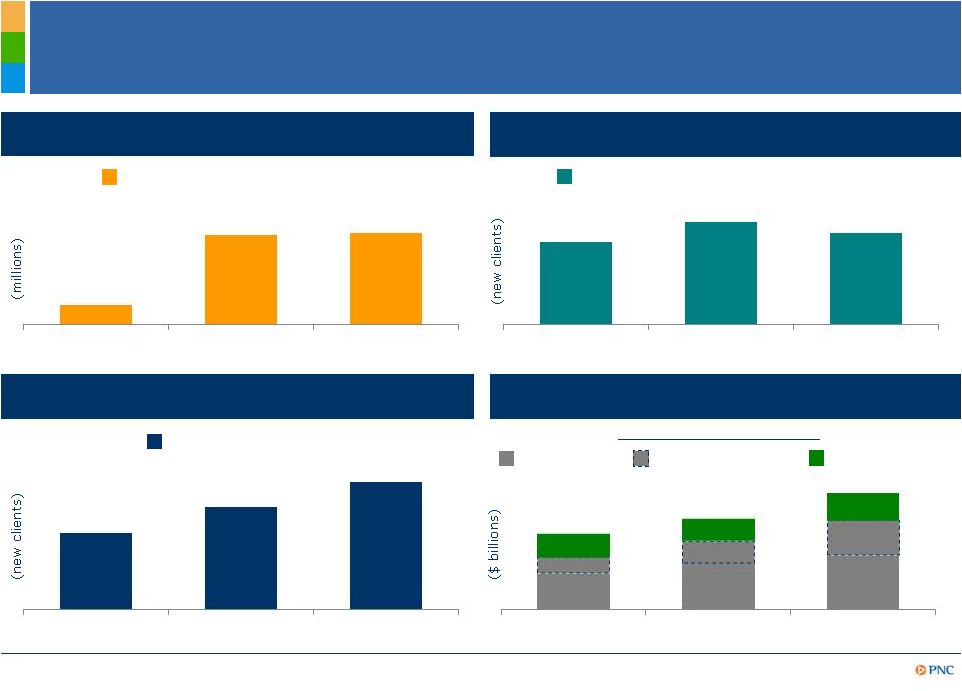 4
Growing Customers –
Long-Term Revenue Potential
(1) Net organic checking relationship growth refers to new consumer and small business
accounts exclusive of accounts acquired through acquisition. (2) A Corporate Banking
primary client is defined as a corporate banking relationship with annual revenue generation of $50,000
or more or, within corporate banking, a commercial banking client relationship with annual
revenue generation of $10,000 or more. (3) Asset Management Group primary client is
defined as a client relationship with annual revenue generation of $10,000 or more. (4) A mortgage with
a borrower as part of a residential real estate purchase transaction.
Asset Management Group
Residential Mortgage
Retail Banking
Corporate Banking
Purchase
4
Net organic checking relationships
1
New primary clients
2
New primary clients
3
+
+
Refinancing
Total
loan
originations
$7.0
$8.4
$10.8
HARP refinancing
+
48
225
230
YTD10
YTD11
YTD12
$3.3
$4.3
$5.0
$1.5
$2.0
$3.2
$2.2
$2.1
$2.6
YTD10
YTD11
YTD12
809
1,084
1,355
YTD10
YTD11
YTD12
694
869
773
YTD10
YTD11
YTD12 |
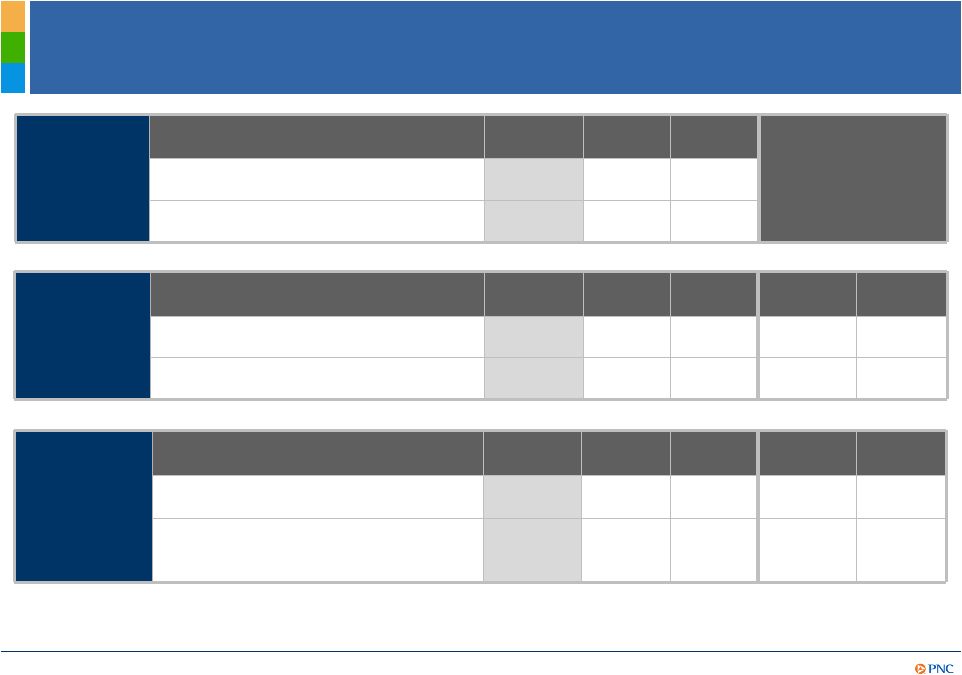 5
Strong Financial Performance
Strong
Earnings
3Q12
2Q12
3Q11
YTD12
YTD11
Net income ($
millions) $925
$546
$834
$2,282
$2,578
Earnings per diluted share
$1.64
$0.98
$1.55
$4.06
$4.79
Performance
Measures
3Q12
2Q12
3Q11
YTD12
YTD11
Return on average assets
1.23%
.74%
1.24%
1.04%
1.31%
Return on average tangible
common equity
2
14.3%
8.9%
14.2%
12.1%
15.4%
(1) At period-end. (2) Return on average tangible common equity is calculated as
annualized net income attributable to common shareholders divided
by
average
tangible
common
equity
(average
common
shareholders’
equity
less
goodwill
and
other
intangible
assets
other
than
servicing rights). Further information is provided in the Appendix.
Balance
Sheet
Growth
3Q12
2Q12
3Q11
Loans
1
($
billions)
$182
$180
$155
Deposits
1
($
billions)
$206
$207
$188 |
 6
Strong Commercial Loan Growth Funded by Favorable
Deposit Mix
Loans increased $1.5 billion or 1%
from 2Q12, primarily driven by
total commercial lending growth of
1%
Consumer loans grew 1% linked
quarter primarily due to higher
automobile lending, partially offset
by residential real estate and
education loans run-off
Transaction deposits increased
$2.3 billion from 2Q12, reflecting
increased commercial and
consumer liquidity
Retail CDs declined due to run-off
of maturing accounts
Tier 1 common capital ratio
strengthened
% change from:
Category (billions)
Sep. 30,
2012
Jun. 30,
2012
Sep. 30,
2011
Commercial
79.7
1%
28%
Commercial real estate
18.6
1%
13%
Total
commercial
lending
1
105.2
1%
24%
Home equity/Residential RE
51.3
(1%)
7%
Automobile
8.3
15%
89%
Other
17.1
(2%)
(2%)
Total consumer lending
76.7
1%
10%
Total loans
$181.9
1%
18%
Transaction deposits
$168.4
1%
18%
Retail CDs & other deposits
37.9
(7%)
(15%)
Total deposits
$206.3
0%
10%
Key ratios:
Transaction deposits to total
deposits
82%
80%
76%
Loans to deposits ratio
88%
87%
82%
Tier
1
common
capital
ratio
3
9.5%
9.3%
10.5%
(1)
Total commercial lending includes commercial, commercial real estate and also includes $6.9
billion of equipment lease financing. (2)
Includes credit card, education and other loans. (3) Tier 1 common capital ratio is
period-end Tier 1 common capital divided by period-end risk weighted assets and
is estimated for September 30, 2012. 3Q12 highlights
2 |
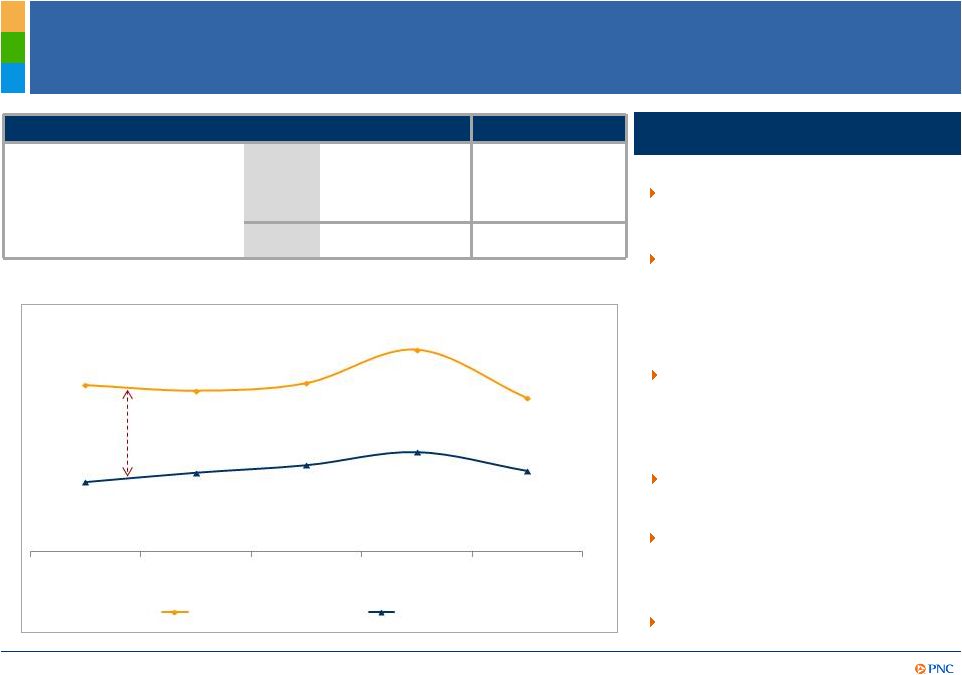 7
NII Improved YOY and YTD
(1) Core net interest income is total net interest income, as reported, less related purchase
accounting accretion (scheduled and cash recoveries). (2) Includes scheduled purchase
accounting accretion and cash recoveries. Cash recoveries reflect cash received in excess of
recorded
investment
from
sales
or
payoffs
of
impaired
commercial
loans.
(3)
Net
interest
margin
less
(annualized
purchase
accounting
accretion/average interest-earning assets). Further information is provided in the
Appendix. (millions)
3Q12
2Q12
3Q11
YTD12
YTD11
Core NII
$2,154
$2,183
$1,884
$6,365
$5,639
Purchase accounting
accretion (PAA)
245
343
291
851
862
Total NII
$2,399
$2,526
$2,175
$7,216
$6,501
Highlights
Core
NII
relatively
stable
due
to
the impact of lower yielding assets
partially offset by loan growth
PAA declined by $98 million due to
lower cash recoveries on impaired
loans and lower accretion on
performing loans and CDs
Linked quarter:
YTD:
Core NII increased 13% due to
RBC Bank (USA) acquisition,
organic loan growth and lower
funding costs
PAA decreased by $11 million
Purchase
accounting
accretion
Net interest margin
Core NIM
Prior year quarter:
Core NII increased 14% primarily
due to RBC Bank (USA) acquisition,
strong organic loan growth and
core net interest margin
improvement
PAA declined by $46 million
3.89%
3.90%
4.08%
3.82%
3.37%
3.42%
3.46%
3.53%
3.43%
3Q11
4Q11
1Q12
2Q12
3Q12
3.86%
1
1
1
3
3
1
2 |
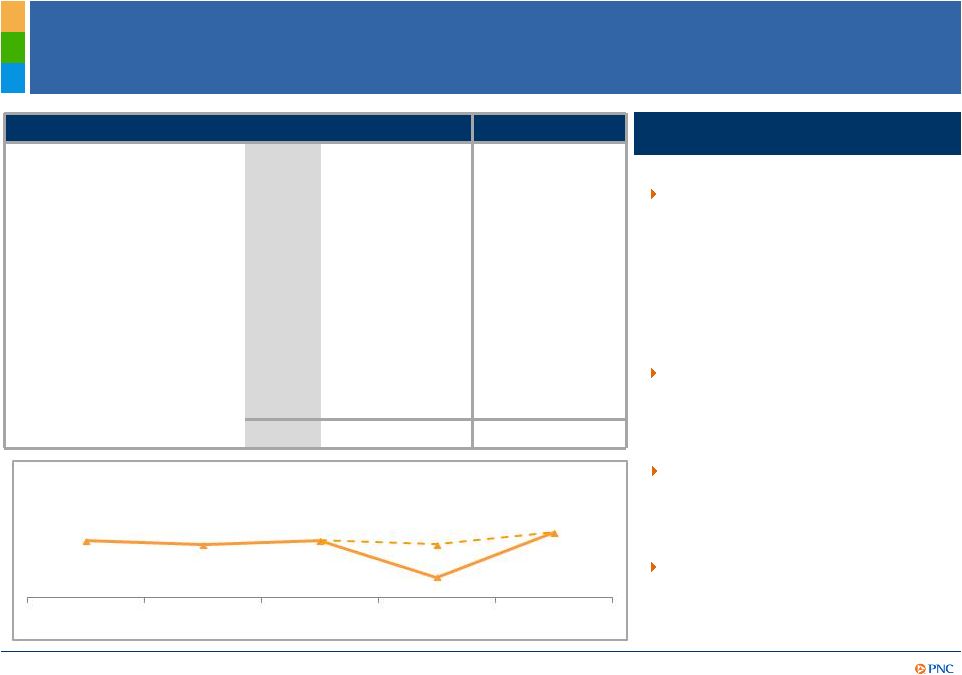 8
Client Growth and Sales Drive Noninterest Income
Highlights
Noninterest income increased 54%
due to:
Strong client fee income growth
offset lower gains on asset sales
and RMSR hedging
Linked quarter:
YTD:
Noninterest income grew 6%
excluding the residential mortgage
repurchase provision and VISA
gain
4
despite Durbin impact
5
(millions)
3Q12
2Q12
3Q11
YTD12
YTD11
Asset management
$305
$278
$287
$867
$838
Consumer services
288
290
330
842
974
Corporate services
295
290
187
817
632
Residential mortgage
banking
264
265
229
791
622
Provision for residential
mortgage repurchase
obligations
(37)
(438)
(31)
(507)
(66)
Deposit service charges
152
144
140
423
394
Net gains on sales of
securities less net OTTI
16
28
33
63
79
Other
406
240
194
931
803
Total noninterest income
$1,689
$1,097
$1,369
$4,227
$4,276
Prior year quarter:
Noninterest income grew 23% or
13% excluding the VISA pre-tax
gain
4
3
39%
38%
39%
30%
41%
38%
3Q11
4Q11
1Q12
2Q12
3Q12
Noninterest income to total revenue
–
Lower provision for residential
mortgage repurchase
obligations of $401 million
–
Pre-tax gain of $137 million on
sale of a portion of our VISA
investment
1
2
(1) Asset management includes the Asset Management Group and BlackRock. (2) Residential
mortgage consists of residential mortgage banking less provision for residential
mortgage repurchase obligations. (3) Excluding the provision for residential mortgage repurchase
obligations of $438 million in 2Q12. Further information is provided in the Appendix. (4)
Further information is provided in the Appendix.
(5) The Dodd-Frank Act limits related to interchange rates on debit card transactions,
which were effective October 1, 2011. |
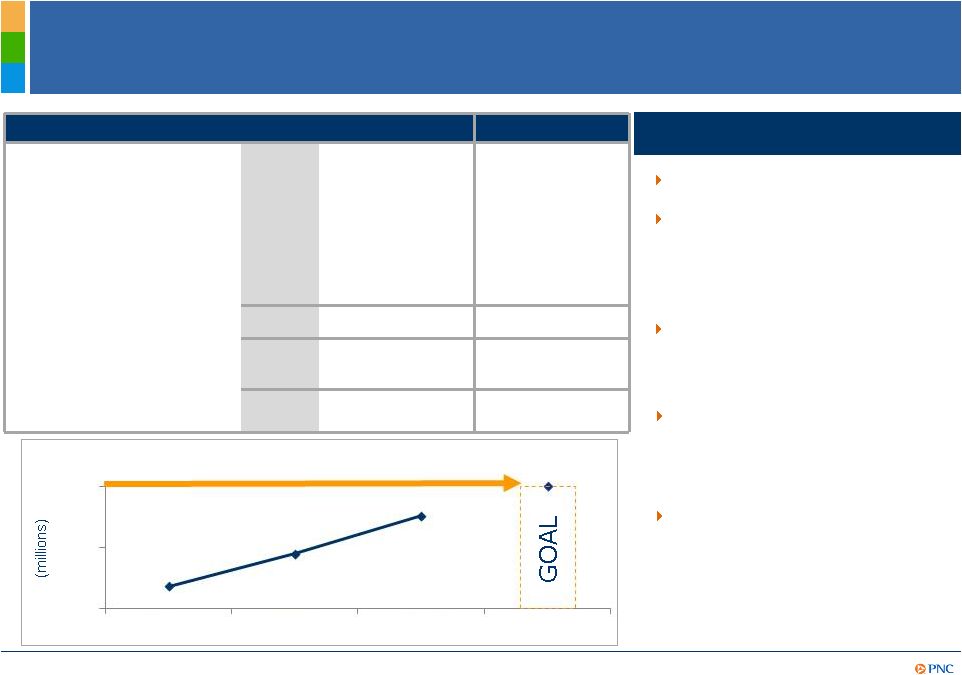 9
Disciplined Expense Management While Investing for
Growth
(millions)
3Q12
2Q12
3Q11
YTD12
YTD11
Personnel
$1,173
$1,107
$948
$3,346
$2,912
Occupancy
207
198
171
583
540
Equipment
184
174
159
527
484
Marketing
62
56
70
173
171
Other
894
931
784
2,667
2,265
Total core noninterest
expense
1
$2,520
$2,466
$2,132
$7,296
$6,372
Integration costs
35
52
8
232
14
Trust preferred securities
redemption charges
95
130
-
225
0
Total noninterest
expense
$2,650
$2,648
$2,140
$7,753
$6,386
Noninterest expense remained stable
when compared to 2Q12
Increased personnel expense related
to the impact of higher equity
markets on deferred compensation
obligations (partially offset by related
hedge gain in other noninterest
income) and business volumes
Other expense decreased primarily as
a result of higher additions to legal
reserves in 2Q12
Highlights
Linked quarter:
YTD:
Core noninterest expense increase of
14% reflects RBC Bank (USA)
operating
costs,
higher
select
costs
3
and overall business investments
partially offset by continuous
improvement initiatives
Prior year quarter:
Core noninterest expense increase of
18% reflects RBC Bank (USA)
operating costs, higher select
costs
3
and
business
investments
$101
$246
$0
$275
$550
1Q12
1H12
YTD12
FY12
$417
$550
2012
Continuous
Improvement
2
financial
impact
+
2
Core
1
:
(1) Core noninterest expense items do not include the impact of integration costs and trust
preferred securities redemption charges, which are listed separately in the table above,
but do include the impact of RBC Bank (USA) operating expenses. See the Appendix for the impact of integration costs and trust preferred securities
redemptions charges for unamortized discount on each category of noninterest expense. (2)
Continuous improvement initiatives for annualized run rate cost saves related to legacy
PNC’s efficiency initiatives and RBC Bank (USA) cost saves. Estimated through YTD12. (3) Select costs include legal/mortgage foreclosure-related/OREO
costs. Legal represents accruals for legal contingencies and mortgage foreclosure-related
represents costs to comply with regulatory consent decrees. OREO costs consist of
gains/losses on sale of OREO assets, write-downs on the assets and operating expenses. |
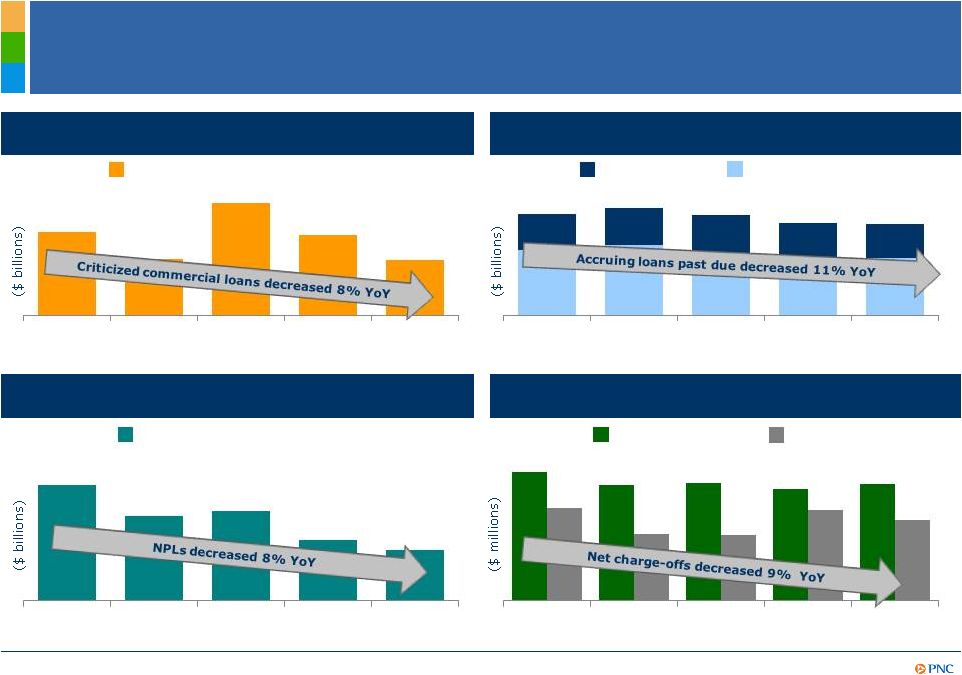 10
Credit Trends Continue to Improve
Nonperforming
loans
2,4
Provision and net charge-offs
Criticized commercial loans
30-89 Days
90 Days +
Accruing
loans
past
due
2,3
Criticized
Commercial
loans
1
Total nonperforming loans
Provision
Net charge-offs
$10.8
$9.9
$11.8
$10.7
$9.9
3Q11
4Q11
1Q12
2Q12
3Q12
$2.8
$3.0
$2.6
$2.5
$2.5
$1.6
$1.6
$1.7
$1.4
$1.4
3Q11
4Q11
1Q12
2Q12
3Q12
$3.7
$3.6
$3.6
$3.5
$3.4
3Q11
4Q11
1Q12
2Q12
3Q12
$365
$327
$333
$315
$331
$261
$190
$185
$256
$228
3Q11
4Q11
1Q12
2Q12
3Q12
As of quarter end except net charge-offs and provision, which are for the quarter. (1)
Criticized loans are ones that we consider “special mention,”
“substandard’” or “doubtful”. (2) Loans acquired from National City
or RBC Bank (USA) that were impaired are not included as they were recorded at
estimated fair value when acquired and are currently considered performing loans due to the
accretion of interest in purchase accounting. (3) Includes loans that are government
guaranteed/insured, primarily residential mortgages. These loans totaled $2.7 billion in 3Q12. (4) Does not include loans held
for sale or foreclosed and other assets. Effective in 2011, excludes residential real estate
loans accounted for under the fair value option. |
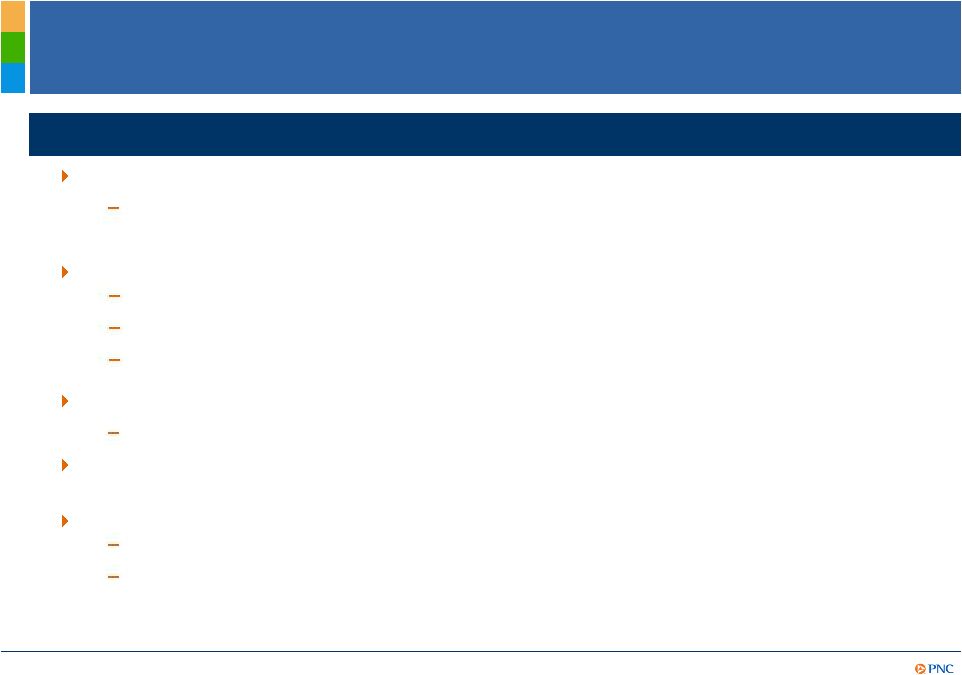 11
Strong Capital and Liquidity Position
(1) Estimated at September 30, 2012. (2) Based on current understanding of Basel III NPRs and
estimates of Basel II (with proposed modifications) risk-weighted assets. Includes
application of Basel II.5. Subject to further regulatory clarity and development, validation and
regulatory approval of Basel models. (3) Parent company liquidity coverage defined as liquid
assets divided by funding obligations within a two year period.
3Q12 highlights
Basel
I
Tier
1
common
ratio
of
9.5%
1
Capital priorities:
Basel
III
Tier
1
common
ratio
goal
is
8.0-8.5%
by
year-end
2013
without
benefit
of
phase-ins
2
Issued $480 million of preferred stock in late September and early October 2012
bringing our total Basel III qualifying preferred stock to $3.6
billion Strong liquidity position
Increased 20 bps due to retained earnings partially offset by increase in
risk-weighted assets from loan growth
Build capital to support client growth and business investment
Maintain appropriate capital in light of economic uncertainty
Return excess capital to shareholders
Improved capital treatment expected on sub-investment grade securities
Loans to deposits ratio of 88%
Parent
company
two
year
liquidity
coverage
3
of
151% |
 12
Cautionary Statement Regarding Forward-Looking
Information
This
presentation
includes
“snapshot”
information
about
PNC
used
by
way
of
illustration
and
is
not
intended
as
a
full
business
or
financial
review.
It
should not be viewed in isolation but rather in the context of all of the information made
available by PNC in its SEC filings. We also make statements in this presentation, and
we may from time to time make other statements, regarding our outlook for earnings, revenues,
expenses, capital levels and ratios, liquidity levels, asset levels, asset quality, financial
position, and other matters regarding or affecting PNC and its future business and
operations that are forward-looking statements within the meaning of the Private Securities Litigation Reform Act. Forward-
looking
statements
are
typically
identified
by
words
such
as
“believe,”
“plan,”
“expect,”
“anticipate,”
“see,”
“look,”
“intend,”
“outlook,”
“project,”
“forecast,”
“estimate,”
“goal,”
“will,”
“should”
and other similar words and expressions. Forward-looking statements are subject to
numerous assumptions, risks and uncertainties, which change over time.
Forward-looking statements speak only as of the date made. We do not assume any duty
and do not undertake to update forward-looking statements. Actual results or
future events could differ, possibly materially, from those anticipated in forward-looking statements, as well as from
historical performance.
Our forward-looking statements are subject to the following principal risks and
uncertainties. •Our businesses, financial results and balance sheet values are
affected by business and economic conditions, including the following: o
Changes in interest rates and valuations in debt, equity and other financial markets.
o
Disruptions in the liquidity and other functioning of U.S. and global financial markets.
o
The
impact
on
financial
markets
and
the
economy
of
any
changes
in
the
credit
ratings
of
U.S.
Treasury
obligations
and
other
U.S.
government-
backed
debt,
as
well
as
issues
surrounding
the
level
of
U.S.
and
European
government
debt
and
concerns
regarding
the
creditworthiness
of
certain sovereign governments, supranationals and financial institutions in Europe.
o
Actions by Federal Reserve, U.S. Treasury and other government agencies, including those that
impact money supply and market interest rates. o
Changes in customers’, suppliers’
and other counterparties’
performance and creditworthiness.
o
Slowing or failure of the current moderate economic expansion.
o
Continued effects of aftermath of recessionary conditions and uneven spread of positive
impacts of recovery on the economy and our counterparties, including adverse impacts on
levels of unemployment, loan utilization rates, delinquencies, defaults and counterparty ability to
meet credit and other obligations.
o
Changes in customer preferences and behavior, whether due to changing business and economic
conditions, legislative and regulatory initiatives, or other factors.
•Our forward-looking financial statements are subject to the risk that economic and
financial market conditions will be substantially different than we are currently
expecting. These statements are based on our current view that the moderate economic expansion will persist and interest rates will
remain
very
low
in
2012
and
2013,
despite
downside
risks
from
the
“fiscal
cliff”
and
European
recession.
•PNC’s regulatory capital ratios in the future will depend on, among other things,
the company’s financial performance, the scope and terms of final capital
regulations
then
in
effect
(particularly
those
implementing
the
Basel
Capital
Accords),
and
management
actions
affecting
the
composition
of
PNC’s balance sheet. In addition, PNC’s ability to forecast regulatory capital
ratios will be dependent on the ongoing development, validation and regulatory approval
of related models. Appendix |
 13
Cautionary Statement Regarding Forward-Looking
Information (continued)
Appendix
•Legal
and
regulatory
developments
could
have
an
impact
on
our
ability
to
operate
our
businesses,
financial
condition,
results
of
operations,
competitive
position,
reputation,
or
pursuit
of
attractive
acquisition
opportunities.
Reputational
impacts
could
affect
matters
such
as
business
generation and retention, liquidity, funding, and ability to attract and retain
management. These developments could include: o
Changes resulting from legislative and regulatory reforms, including major reform of the
regulatory oversight structure of the financial services industry and changes to laws
and regulations involving tax, pension, bankruptcy, consumer protection, and other industry aspects, and changes
in accounting policies and principles. We will be impacted by extensive reforms provided
for in the Dodd-Frank Wall Street Reform and Consumer Protection Act (the
“Dodd-Frank Act”) and otherwise growing out of the recent financial crisis, the precise nature, extent and timing of
which, and their impact on us, remains uncertain.
o
Changes to regulations governing bank capital and liquidity standards, including due to the
Dodd-Frank Act and to Basel-related initiatives. o
Unfavorable resolution of legal proceedings or other claims and regulatory and other
governmental investigations or other inquiries. In addition to
matters
relating
to
PNC’s
business
and
activities,
such
matters
may
include
proceedings,
claims,
investigations,
or
inquiries
relating
to
pre-
acquisition business and activities of acquired companies, such as National City. These
matters may result in monetary judgments or settlements or other remedies, including
fines, penalties, restitution or alterations in our business practices and in additional expenses and
collateral costs, and may cause reputational harm to PNC.
o
Results of the regulatory examination and supervision process, including our failure to
satisfy requirements of agreements with governmental agencies.
o
Impact
on
business
and
operating
results
of
any
costs
associated
with
obtaining
rights
in
intellectual
property
claimed
by
others
and
of
adequacy of our intellectual property protection in general.
•Business and operating results are affected by our ability to identify and effectively
manage risks inherent in our businesses, including, where appropriate,
through
effective
use
of
third-party
insurance,
derivatives,
and
capital
management
techniques,
and
to
meet
evolving
regulatory
capital
standards. In particular, our results currently depend on our ability to manage elevated
levels of impaired assets. •Business
and
operating
results
also
include
impacts
relating
to
our
equity
interest
in
BlackRock,
Inc.
and
rely
to
a
significant
extent
on
information
provided
to
us
by
BlackRock.
Risks
and
uncertainties
that
could
affect
BlackRock
are
discussed
in
more
detail
by
BlackRock
in
its
SEC
filings.
•Our
acquisition
of
RBC
Bank
(USA)
presents
us
with
risks
and
uncertainties
related
to
the
integration
of
the
acquired
businesses
into
PNC,
including:
o
Anticipated benefits of the transaction, including cost savings and strategic gains, may be
significantly harder or take longer to achieve than expected
or
may
not
be
achieved
in
their
entirety
as
a
result
of
unexpected
factors
or
events.
o
Our
ability
to
achieve
anticipated
results
from
this
transaction
is
dependent
also
on
the
extent
of
credit
losses
in
the
acquired
loan
portfolios
and the
extent
of
deposit
attrition,
in
part
related
to
the
state
of
economic
and
financial
markets.
Also,
litigation
and
regulatory
and
other
governmental investigations that may be filed or commenced relating to the pre-acquisition
business and activities of RBC Bank (USA) could impact the timing or realization of
anticipated benefits to PNC. o
Integration of RBC Bank (USA)’s business and operations into PNC may take longer than
anticipated or be substantially more costly than anticipated or have unanticipated
adverse results relating to RBC Bank (USA)’s or PNC’s existing businesses. PNC’s ability to integrate RBC Bank
(USA) successfully may be adversely affected by the fact that this transaction results in PNC
entering several geographic markets where PNC did not previously have any meaningful
retail presence. |
 14
Cautionary Statement Regarding Forward-Looking
Information (continued)
Appendix
•In addition to the RBC Bank (USA) transaction, we grow our business in part by acquiring
from time to time other financial services companies, financial services assets and
related deposits and other liabilities. These other acquisitions often present risks and uncertainties analogous to those
presented by the RBC Bank (USA) transaction. Acquisition risks include those presented
by the nature of the business acquired as well as risks and uncertainties related to
the acquisition transactions themselves, regulatory issues, and the integration of the acquired businesses into PNC after
closing.
•Competition can have an impact on customer acquisition, growth and retention and on
credit spreads and product pricing, which can affect market share, deposits and
revenues. Industry restructuring in the current environment could also impact our business and financial performance through
changes in counterparty creditworthiness and performance and in the competitive and regulatory
landscape. Our ability to anticipate and respond to technological changes can
also impact our ability to respond to customer needs and meet competitive demands.
•Business
and
operating
results
can
also
be
affected
by
widespread
disasters,
dislocations,
terrorist
activities
or
international
hostilities
through
impacts on the economy and financial markets generally or on us or our counterparties
specifically. We provide greater detail regarding these as well as other factors in our
2011 Form 10-K, as amended by Amendment No. 1 thereto, and first and second quarter
2012 Form 10-Qs, including in the Risk Factors and Risk Management sections and the Legal Proceedings and Commitments and
Guarantees Notes of the Notes to Consolidated Financial Statements in those reports, and in
our subsequent SEC filings. Our forward-looking statements
may
also
be
subject
to
other
risks
and
uncertainties,
including
those
we
may
discuss
elsewhere
in
this
presentation
or
in
SEC
filings,
accessible on the SEC’s website at www.sec.gov and on our corporate website at
www.pnc.com/secfilings. We have included these web addresses as inactive
textual
references
only.
Information
on
these
websites
is
not
part
of
this
document.
Any annualized, proforma, estimated, third party or consensus numbers in this presentation are
used for illustrative or comparative purposes only and may not reflect actual
results. Any consensus earnings estimates are calculated based on the earnings projections made by analysts who cover
that company. The analysts’
opinions, estimates or forecasts (and therefore the consensus earnings estimates) are theirs
alone, are not those of PNC or its management, and may not reflect PNC’s or other
company’s actual or anticipated results. |
 15
Non-GAAP to GAAP Reconcilement
Appendix
In millions
Sep. 30, 2012
Jun. 30, 2012
Sep. 30, 2011
Sep. 30, 2012
Sep. 30, 2011
Tier 1 common capital (1)
$24,383
$23,691
$23,448
$24,383
$23,448
Reported net income
925
546
834
2,282
2,578
Reported net income, if annualized
3,680
2,196
3,309
3,048
3,447
Return on tier 1 common capital
15.3%
9.3%
14.3%
18.8%
22.2%
(1) Estimated for Sep. 30, 2012.
As of or for the nine months ended
PNC
believes
that
return
on
tier
1
common
capital
is
useful
as
a
tool
to
help
measure
and
assess
a
company's
use
of
common
equity.
As of or for the three months ended
In millions
Sep. 30, 2012
Jun. 30, 2012
Sep. 30, 2011
Sep. 30, 2012
Sep. 30, 2011
Average common shareholders' equity
$34,323
$33,648
$32,124
$33,654
$31,147
Average goodwill and other intangible assets other than servicing rights
9,956
10,008
8,989
9,766
9,002
Average tangible common equity
$24,367
$23,640
$23,135
$23,888
$22,145
Net income attributable to common shareholders
876
526
826
2,168
2,547
Net income attributable to common shareholders, if annualized
3,485
2,116
3,277
2,896
3,405
Return on average tangible common equity
14.3%
8.9%
14.2%
12.1%
15.4%
As of or for the three months ended
As of or for the nine months ended
PNC believes that return on average tangible common equity is useful as a tool to help measure
and assess a company's use of common equity. |
 16
Non-GAAP to GAAP Reconcilement
Appendix
For the three months ended
In millions
Jun. 30, 2011
Total noninterest income, as reported
$1,097
Total revenue, as reported
$3,623
Adjustments:
Provision for residential mortgage repurchase obligations
438
Total noninterest income, as adjusted
$1,535
Total revenue, as adjusted
$4,061
Total noninterest income to total revenue, as reported
30%
Total noninterest income to total revenue, as adjusted
38%
PNC believes that information adjusted for the impact of certain items may be useful to
help evaluate the impact of those items on our operations.
In millions
Sep. 30, 2012
Sep. 30, 2011
% change
Total noninterest income, as reported
$4,227
$4,276
-1%
Adjustments:
Provision for residential mortgage repurchase obligations
507
66
Gain on sale of Visa Class B common shares
(137)
-
Total noninterest income, as adjusted
$4,597
$4,342
6%
PNC believes that information adjusted for the impact of certain items may be useful to help
evaluate the impact of those items on our operations.
For the nine months ended
In millions
Sep. 30, 2012
Sep. 30, 2011
% change
Total noninterest income, as reported
$1,689
$1,369
23%
Adjustments:
Gain on sale of Visa Class B common shares
(137)
-
Total noninterest income, as adjusted
$1,552
$1,369
13%
For the three months ended
PNC believes that information adjusted for the impact of certain items may be useful to help
evaluate the impact of those items on our operations. |
 17
Non-GAAP to GAAP Reconcilement
$ in millions
Sept. 30, 2012
Jun. 30, 2012
Mar. 31, 2012
Dec. 31, 2011
Sep. 30, 2011
Net interest margin, as reported
3.82%
4.08%
3.90%
3.86%
3.89%
Purchase accounting accretion (1)
$245
$343
$263
$256
$291
Purchase accounting accretion, if annualized
$975
$1,380
$1,058
$1,016
$1,155
Avg. interest earning assets
$252,606
$250,132
$237,734
$228,406
$224,072
Annualized purchase accounting accretion/Avg. interest-earning assets
0.39%
0.55%
0.44%
0.44%
0.52%
Core net interest margin (2)
3.43%
3.53%
3.46%
3.42%
3.37%
For the three months ended
(1) Purchase accounting accretion is scheduled purchase accounting accretion plus cash
recoveries. (2)
PNC
believes
that
core
net
interest
margin,
a
non-GAAP
measure,
is
useful
as
a
tool
to
help
evaluate
the
impact
of
purchase
accounting
accretion
on
net interest margin. The adjustment represents annualized purchase accounting accretion
divided by average interest-earning assets. Appendix |
 18
Non-GAAP to GAAP Reconcilement
Appendix
In millions
Sep. 30, 2012
Jun. 30, 2012
Sep. 30, 2011
Sep. 30, 2012
Sep. 30, 2011
Personnel, as reported
$1,171
$1,119
$949
$3,401
$2,914
Integration costs
(2)
12
1
55
2
Core Personnel
1,173
1,107
948
3,346
2,912
Occupancy, as reported
212
199
171
601
540
Integration costs
5
1
-
18
-
Core Occupancy
207
198
171
583
540
Equipment, as reported
185
181
159
541
484
Integration costs
1
7
-
14
-
Core Equipment
184
174
159
527
484
Marketing, as reported
74
67
72
209
175
Integration costs
12
11
2
36
4
Core Marketing
62
56
70
173
171
Other, as reported
1,008
1,082
789
3,001
2,273
Integration costs
19
21
5
109
8
TPS redemption charges
95
130
-
225
-
Core Other
894
931
784
2,667
2,265
Total core noninterest expense
$2,520
$2,466
$2,132
$7,296
$6,372
Selected items:
Integration costs
$35
$52
$8
$232
$14
Trust preferred securities redemption charges
95
130
-
225
-
Total noninterest expense
$2,650
$2,648
$2,140
$7,753
$6,386
For the quarter ended
For the nine months ended |
